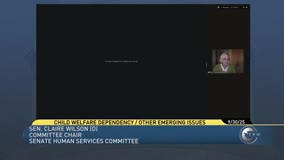Pilot bridge‑housing programs open on both sides of state to help young people exit inpatient treatment
September 30, 2025 | Legislative Sessions, Washington
This article was created by AI summarizing key points discussed. AI makes mistakes, so for full details and context, please refer to the video of the full meeting. Please report any errors so we can fix them. Report an error »

Representatives of the Bridging/Housing coalition told the Senate Human Services Committee that Washington has launched pilot “bridge‑housing” sites designed to house young adults (generally ages 18–24) immediately after discharge from inpatient behavioral‑health or substance‑use treatment.
Jim Theophilus, a longtime advocate for youth housing and services, summarized the rationale: many young people who complete inpatient treatment are discharged to emergency shelter or an unstable street setting, which makes relapse and return to homelessness likely. He said legislation passed in 2018 and follow‑up funding in 2024 provided resources to create public‑private bridge‑housing pilots; the statute and implementation require community‑based short‑term residences (6–10 beds) on each side of the state.
Theophilus said two programs had opened by July: one operated by Friends of Youth on the West Side and a Spokane site on the East Side. The bridge‑housing model is voluntary, community‑based, and intended to support young people for a brief period after discharge while they engage with services, find housing and continue recovery. Theophilus described the programs as “return‑to‑community” plans that are co‑designed with young people and that include housing, service navigation and supports to reconnect to education or employment.
Advocates said bridge housing is not a substitute for larger systemic investments in inpatient capacity, outpatient treatment, or community supports; rather, it fills a short‑term gap that often prevents treatment gains from carrying into stable community living. The committee was invited to attend upcoming ribbon‑cutting events and to review program materials; advocates said the model was adapted through input from young people with lived experience.
Less critical details: the pilot programs are intended for 18‑ to 24‑year‑olds, typically provide 6–10 beds each, and emphasize voluntary participation and youth‑driven return‑to‑community planning.
Jim Theophilus, a longtime advocate for youth housing and services, summarized the rationale: many young people who complete inpatient treatment are discharged to emergency shelter or an unstable street setting, which makes relapse and return to homelessness likely. He said legislation passed in 2018 and follow‑up funding in 2024 provided resources to create public‑private bridge‑housing pilots; the statute and implementation require community‑based short‑term residences (6–10 beds) on each side of the state.
Theophilus said two programs had opened by July: one operated by Friends of Youth on the West Side and a Spokane site on the East Side. The bridge‑housing model is voluntary, community‑based, and intended to support young people for a brief period after discharge while they engage with services, find housing and continue recovery. Theophilus described the programs as “return‑to‑community” plans that are co‑designed with young people and that include housing, service navigation and supports to reconnect to education or employment.
Advocates said bridge housing is not a substitute for larger systemic investments in inpatient capacity, outpatient treatment, or community supports; rather, it fills a short‑term gap that often prevents treatment gains from carrying into stable community living. The committee was invited to attend upcoming ribbon‑cutting events and to review program materials; advocates said the model was adapted through input from young people with lived experience.
Less critical details: the pilot programs are intended for 18‑ to 24‑year‑olds, typically provide 6–10 beds each, and emphasize voluntary participation and youth‑driven return‑to‑community planning.
View full meeting
This article is based on a recent meeting—watch the full video and explore the complete transcript for deeper insights into the discussion.
View full meeting
